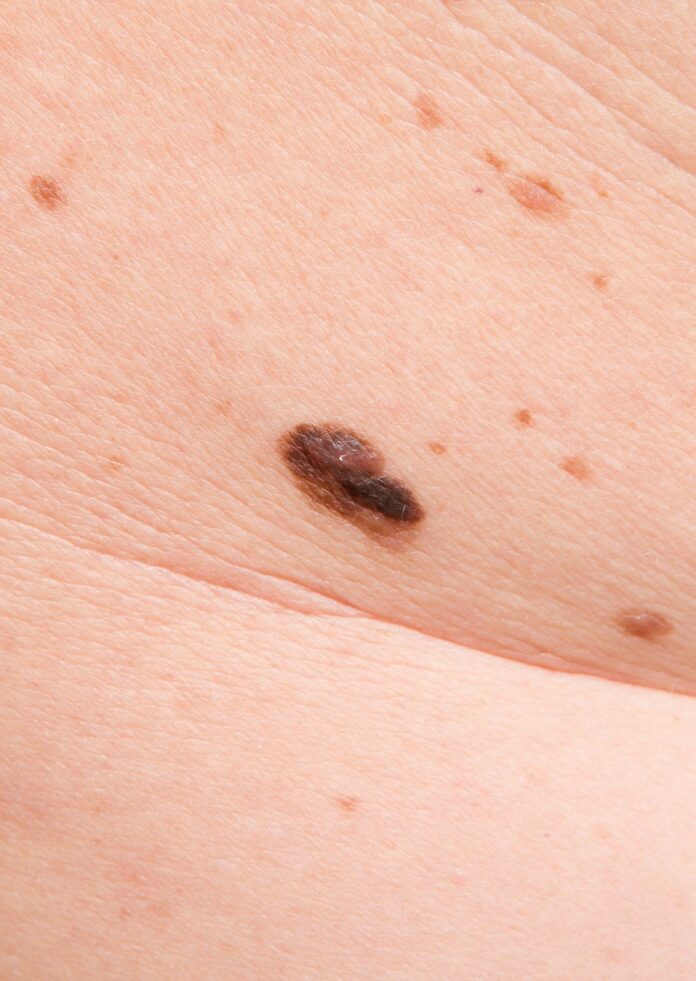
Melanoma is a type of skin cancer that develops in the melanocytes, the cells that produce melanin. It is considered the most dangerous type of skin cancer because it can spread to other parts of the body if not treated early. Melanoma can develop on any part of the body, including normal skin and in existing moles. It is important to be aware of the symptoms of melanoma and to seek medical attention if you notice any changes in your skin.
In this article, we will discuss the common symptoms of melanoma and how to recognize them. Early detection is key to successful treatment, so being aware of the signs and symptoms is crucial.
Asymmetry
One of the common signs of melanoma is asymmetry in moles or skin lesions. If you notice that one half of a mole does not match the other half, it could be a warning sign of melanoma. Normal moles are usually symmetrical, so any irregularity in shape should be examined by a dermatologist.
It is important to regularly check your moles and skin for any changes in appearance. If you notice any new moles or changes in existing ones, it is important to have them evaluated by a healthcare professional.
Border
The border of a mole or skin lesion is another important indicator of melanoma. If the edges are irregular, scalloped, or notched, it could be a sign of skin cancer. Normal moles have smooth, well-defined borders, so any changes in the border should be taken seriously.
It is important to pay attention to any changes in the border of your moles and to seek medical attention if you notice any irregularities. Early detection of melanoma can significantly improve the chances of successful treatment.
Color
Another symptom of melanoma is changes in the color of moles or skin lesions. Normal moles are usually a single shade of brown, but melanoma can cause moles to become multicolored, with shades of brown, black, red, blue, or white. If you notice any changes in the color of your moles, it is important to have them checked by a dermatologist.
Melanoma can also cause moles to become darker or lighter in color, so any changes in pigmentation should be evaluated by a medical professional. Regular monitoring of your moles and skin can help in detecting any changes in color early on.
Diameter
The size of a mole or skin lesion can also be a symptom of melanoma. While melanomas are usually larger than normal moles, the size can vary. If a mole has a diameter larger than 6 millimeters, it could be a warning sign of melanoma, but smaller melanomas are also possible.
It is important to keep an eye on the size of your moles and to seek medical attention if you notice any changes in size. Early detection of melanoma is crucial in successful treatment and improved prognosis.
Evolving
Changes in moles or skin lesions over time can be a warning sign of melanoma. If you notice any new moles or changes in existing ones, such as itching, bleeding, or crusting, it is important to have them evaluated by a dermatologist.
Melanoma can also cause moles to evolve in shape, size, or color, so it is important to be vigilant in monitoring any changes in your skin. Regular self-examinations and professional skin checks can help in early detection of melanoma.
Itching or Pain
While most moles and skin lesions are harmless, melanoma can cause them to become itchy or tender to the touch. Any unusual sensations in moles should be evaluated by a healthcare professional to rule out the possibility of skin cancer.
Pain or tenderness in moles can also be a warning sign of melanoma. If you experience any discomfort in your moles, it is important to seek medical attention for further evaluation.
Bleeding or Oozing
Another symptom of melanoma is moles that bleed or ooze. While most moles do not cause any symptoms, melanoma can cause them to become fragile and prone to bleeding. If you notice any bleeding or oozing from your moles, it is important to have them checked by a dermatologist.
Any changes in the appearance or behavior of moles should be taken seriously and promptly evaluated by a medical professional. Early detection of melanoma can save lives.
Swelling or Redness
Melanoma can also cause moles to become inflamed, swollen, or red in color. Any changes in the appearance of moles should be taken seriously and evaluated by a healthcare professional to rule out the possibility of skin cancer.
If you notice any swelling or redness in your moles, it is important to seek medical attention for further evaluation. Regular monitoring of your skin can help in early detection of any changes in appearance.
Symptoms in Existing Moles
While melanoma can develop in normal skin, it can also occur in existing moles. It is important to regularly check your moles for any changes in appearance, such as the ABCDE signs of melanoma, and to seek medical attention if you notice any irregularities.
If you have any existing moles, it is important to be vigilant in monitoring them for any changes in size, shape, color, or sensation. Regular self-examinations and professional skin checks can help in early detection of melanoma in existing moles.












